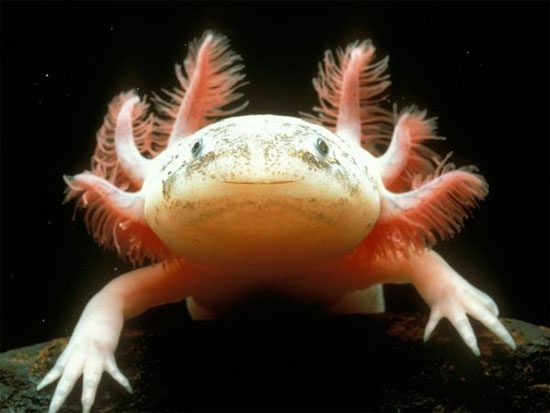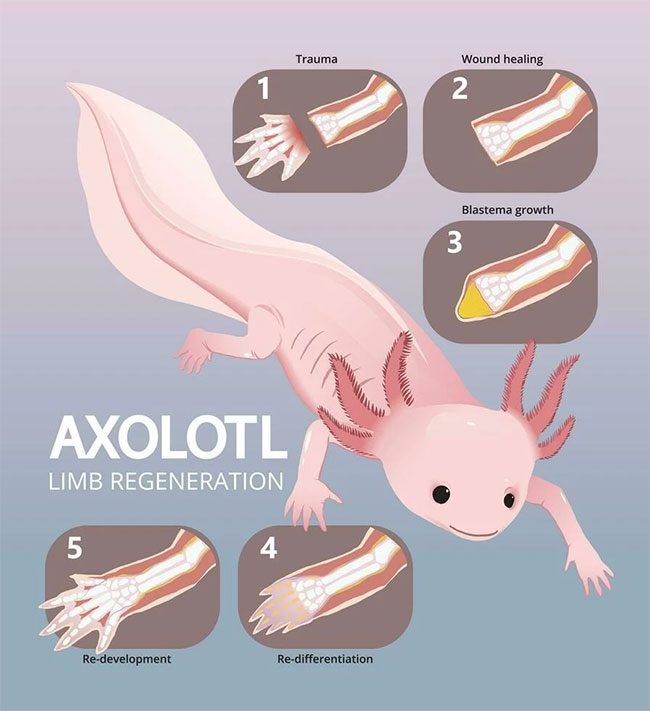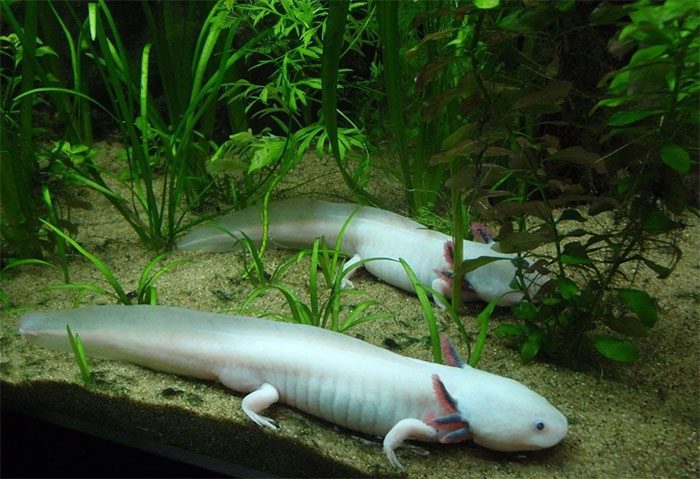The Axolotl is a unique species of salamander that has captured the attention of scientists worldwide due to its remarkable ability to regenerate lost body parts.
A Creature that Holds the Secret of Regeneration

The Axolotl Salamander.
Unlike humans, the Axolotl possesses a superpower to regenerate limbs, spinal cord, and even internal organs like the heart and kidneys after sustaining injuries.
Several other non-vertebrate species are also masters of body recovery, such as planarians, which can regenerate their entire body from just a small cluster of remaining stem cells.
Among vertebrates, in addition to the Axolotl, tadpoles also possess similar regenerative capabilities. However, this ability diminishes as they mature, unlike in Axolotls, which retain it throughout their lives.
According to The New York Times, the Axolotl exhibits an unusual trait compared to other amphibians: it does not undergo metamorphosis or change in form. They have a pale pink, yellow, or gray-black appearance, with spotted bodies and faces that seem to be smiling.

The Axolotl has the superpower to regenerate after sustaining injuries. (Photo: Vecteezy).
“It’s hard to find things they cannot regenerate: from limbs, tails, spinal cord, eyes, even the retina in some species. We have even observed the regeneration of half of their brain,” said researcher Randal Voss from the University of Kentucky, USA.
To regenerate a lost body part, the remaining cells of the Axolotl must go through several stages. First, blood clots at the injury site to prevent excessive blood loss.
Next, layers of cells form to isolate the wound from external factors. This surface is called the wound epithelium. In the following days, this epithelium will continuously be reinforced, and cells will keep dividing.
Not long after, the continuous cell division causes the epithelium to bulge outward, forming what are known as blastema cells. According to research, blastema cells consist of bone, cartilage, muscle, or random unidentified cells waiting to merge with stem cells in the body.

Stages the Axolotl undergoes to regenerate its limbs. (Photo: Harvard University).
Finally, the blastema cells will continue to divide sufficiently to regenerate the lost original body part, including muscles, bones, and blood vessels.
Unique Genetic Makeup
Thanks to this trait, the Axolotl’s genetic makeup has become a point of interest for scientists. In a paper published in the Proceedings of the National Academy of Sciences in 2021, geneticists gained a clearer understanding of this salamander’s genome at the chromosomal level in a folded form.
Specifically, the study examined how the Axolotl’s genome folds internally at the molecular level and the DNA sequence positions that regulate genes related to regeneration and cellular healing.
When fully extended, each strand of human DNA is over 1.8 meters long. However, the DNA strand of the Axolotl is over 9.1 meters long.
“This work organized the DNA segments in the Axolotl genome in the correct order, as they are located on chromosomes. This is crucial because in all vertebrates, genes are turned on and off by control sequences that are quite far from them,” commented biochemist Elly Tanaka from the Vienna BioCenter, a researcher on Axolotls who did not participate in this project.

The Axolotl has a larger genome than any species ever sequenced by humans. This genome is even ten times larger than the entire human genome. (Photo: Wikimedia).
To date, through various experiments, the secrets of creation in the Axolotl’s regeneration mechanism have led to significant achievements in science.
Notably, researchers discovered that the immune system plays a crucial role in regenerating lost parts. Specifically, the Axolotl’s body contains a type of cell called Macrophages, which can send signals to other parts when an injury occurs.
When scientists injected a substance that eliminated Macrophage cells, a scar similar to that of humans formed at the injury site, instead of creating cells to regenerate that body part.
Related to the tiger salamander, the Axolotl can sometimes grow over 30 cm long, but their average size is usually around 10-15 cm, and they can live for over 15 years. Despite their somewhat cute appearance, the Axolotl is known as a predator in its habitat of deep lakes and canals in Mexico.
The Axolotl is nearly extinct due to the heavy pollution in the water regions where they reside.
Scientists believe that this salamander species holds the key to hope for regenerating limbs in humans.




















































